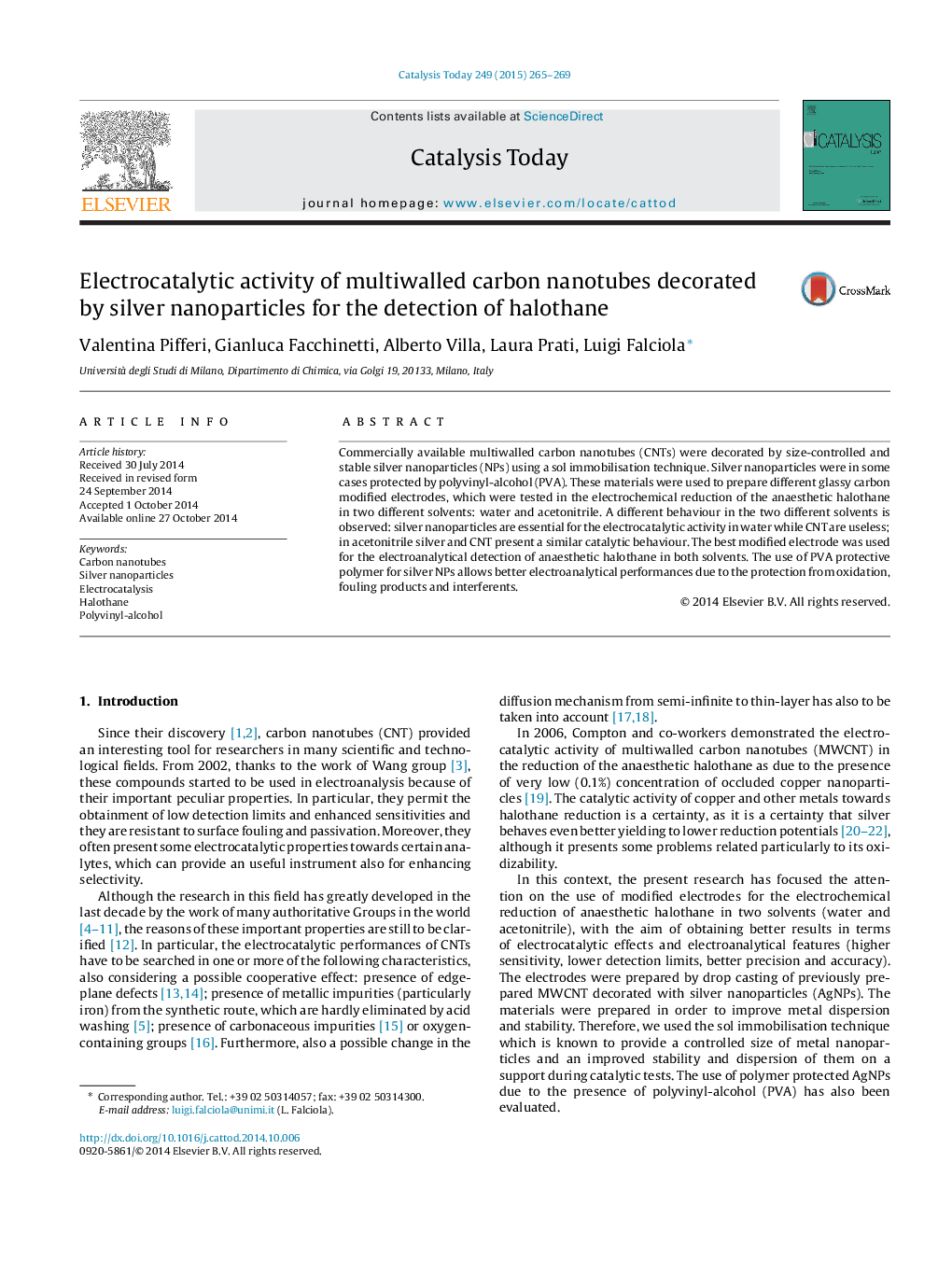| Article ID | Journal | Published Year | Pages | File Type |
|---|---|---|---|---|
| 53736 | Catalysis Today | 2015 | 5 Pages |
•CNTs were decorated by size-controlled, stable Ag-NPs by sol immobilisation.•Ag-NPs were in some cases protected by polyvinyl-alcohol.•Modified electrodes were tested in the electrochemical reduction of halothane.•A different behaviour in water and acetonitrile was observed.•Electroanalytical detection of anaesthetic halothane was performed.
Commercially available multiwalled carbon nanotubes (CNTs) were decorated by size-controlled and stable silver nanoparticles (NPs) using a sol immobilisation technique. Silver nanoparticles were in some cases protected by polyvinyl-alcohol (PVA). These materials were used to prepare different glassy carbon modified electrodes, which were tested in the electrochemical reduction of the anaesthetic halothane in two different solvents: water and acetonitrile. A different behaviour in the two different solvents is observed: silver nanoparticles are essential for the electrocatalytic activity in water while CNT are useless; in acetonitrile silver and CNT present a similar catalytic behaviour. The best modified electrode was used for the electroanalytical detection of anaesthetic halothane in both solvents. The use of PVA protective polymer for silver NPs allows better electroanalytical performances due to the protection from oxidation, fouling products and interferents.
Graphical abstractLinear response of 5%Ag(PVA)CNT electrode in alothane detection.Figure optionsDownload full-size imageDownload high-quality image (147 K)Download as PowerPoint slide
